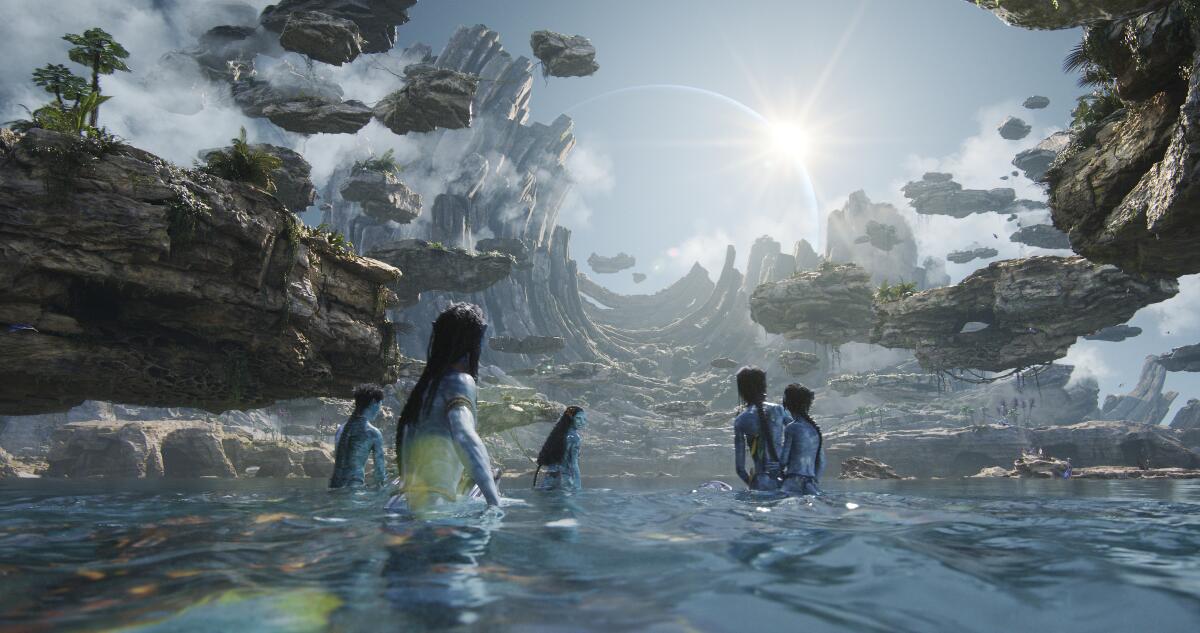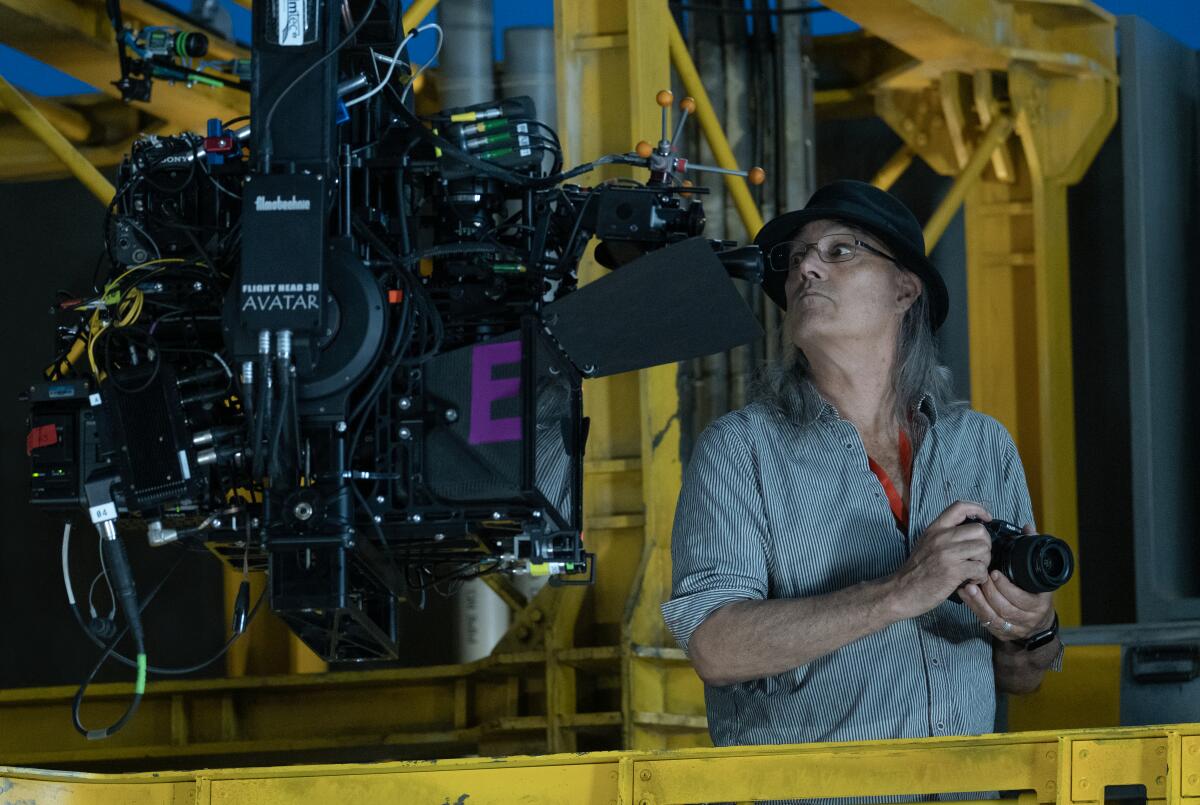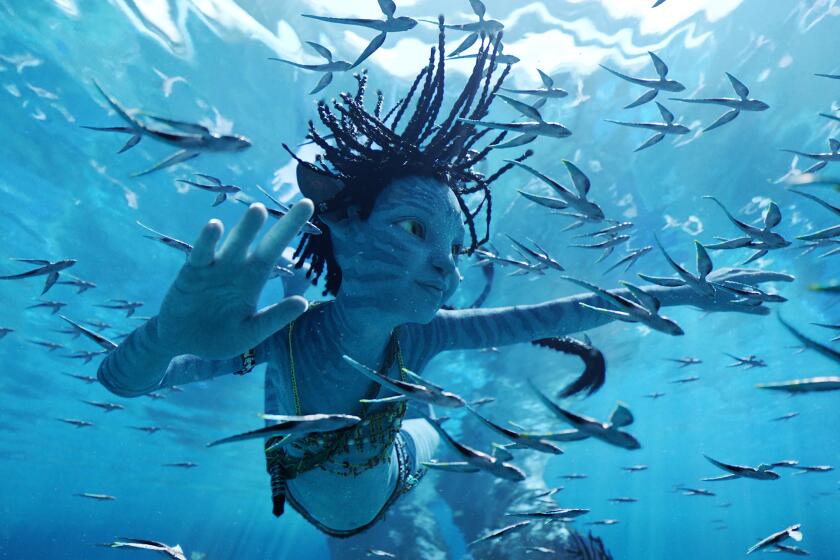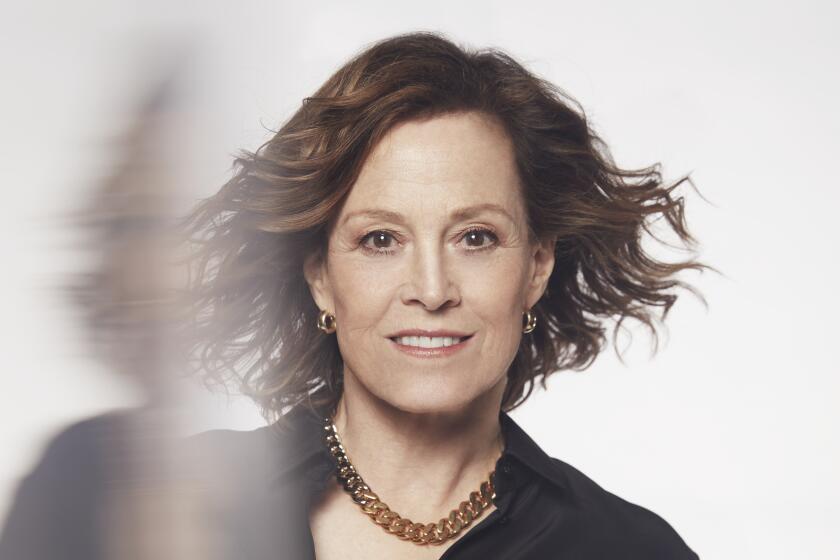How ‘Avatar’s’ cinematographer became a master of the ways of water

- Share via
Cinematographer Russell Carpenter certainly earned his Oscar for “Titanic,” 25 years ago the most technically audacious movie ever made.
When James Cameron asked the Southern California native to come back and direct photography for “Avatar: The Way of Water” along with a second sequel to the auteur’s 3-D science-fiction blockbuster, it required a whole new learning curve. Working with camera engineers, underwater specialists and the digital wizards of New Zealand’s Weta FX, Carpenter developed skills that ensured the wholly constructed moon world of Pandora convinced viewers’ eyes.
“I was totally intimidated by going to a big film school like USC, but I got a really good start at San Diego State,” the self-effacing Carpenter, now 72, says during a video interview from the garage-turned-lighting-studio of his Santa Monica home.
They’ll likely be teaching his “A:TWOW” work until humans go to the stars.
Safe to say making this was a little different from “Titanic”?
Uh, yeah [laughs]. I came on a year before we actually rolled cameras. I was not only tasked with prepping the picture but with doing virtual lighting. This program called Gazebo, they made it really lighting-friendly. You could do exactly the same things you could do on a set and more. You put your light exactly where you want it; I loved that!
How free divers, tech experts and dauntless actors helped James Cameron redefine underwater photography with ‘Avatar: The Way of Water.’
What was working with Cameron like this time around?
It was a constant back-and-forth because if anybody knows Pandora, it’s Jim. We had lots of discussions about nuances of light on Pandora. You could ask him anything. I had an eclipse scene. They bring the older brother, Neteyam, up on this reef and it goes into this very dramatic eclipse. Jim could tell me the gasses that Polyphemus [the Jupiter-like planet Pandora orbits] was made up of and what I might expect to see when whatever their sun is goes behind it. All this detail.
What were your duties during the underwater performance capture?
They had this very deep tank with windows all around, so when we did the virtual performance, live-action cameras shot the performances too. When we shot the live-action scenes — and we also had a huge shallow tank — the key camera operator was Pete Zuccarini, who is just amazing. But I was still charged with lighting every single underwater set. The first challenge was, it’s a pain in the butt! The same thing as on “Titanic,” things move slowly. In fact, we wound up having to get specialized divers to help us pick up the pace.

Did you have to hold your breath and free dive into the tank?
No way! Certainly, on “Titanic,” everybody was in the tank, where water’s flowing really fast and hanging onto something so they don’t roll through the scene. But this, I was in a very comfortable chair watching a bunch of monitors. No, that task was definitely left up to sturdier individuals than I am.
So you controlled the lights how?
A huge advantage we had over the technology in “Avatar” One was having a lighting board that can send signals to a light that is not attached to any wire and is running off a battery that lasts a darn long time. You can just place these lights around — it has to be a marine light, waterproof tubes — set them where you want or put them on a stand. And you have the tremendous advantage that you can make these lights any color. If you’re in a lime green environment like a swamp or a different ocean environment, you just dial that in. That was a big leg up over whatever they had to work with in 2008.
The 3-D cameras were improved as well, right?
They used a two-gig sensor on the first “Avatar,” tiny compared to what’s available today. We wanted to use a larger sensor, a 4K Super 35. It’s really ideal for 3-D, but it’s larger. Patrick Campbell worked for years on the rigs, just to lighten the handheld and Steadicam rigs as much as possible. He used new materials, he really pared that down.
With the ‘Alien,’ ‘Ghostbusters’ and ‘Avatar’ series, you might think Sigourney Weaver has eyes for genre stories. Not so, the actor says.
We separated the lens block and the sensor from all the processing that the camera did; we basically split it in two. Only the lenses and the sensor are actually in the 3-D system, then you have a cable that runs off to the rest of it, which the operator usually carried on his back.
Many feel this is the first feature that makes High Frame Rate work onscreen.
We had to test shutter angles a lot because if you shot with the same shutter angle you would normally use, you get a kind of staccato effect. You can get a hyper clarity that’s like looking through a pane glass window. We found a sweet spot, basically, after a lot of testing, that took care of those issues. We knew that Jim wanted the clarity of 48 frames for some scenes and for others, like closeups of people, he felt 24 frames were a little sweeter. So even though we shot everything at 48, he could totally mimic the feel of 24 frames.
You shot “Avatar 3” simultaneously, but COVID broke up the whole schedule. Stressful?
It pushed us back many more months. Jim and [producer] Jon Landau arranged a deal with New Zealand that we would go in on a trial basis. So we’re working with COVID conditions and we’ve got an actor for the human character Spider [Jack Champion, now 18] who’s growing up. I mean, if you really look for it, you’ll see Spider looks a lot younger in that scene than this Spider here. I think they got away with it, but the clock was ticking and we constantly felt that.
More to Read
From the Oscars to the Emmys.
Get the Envelope newsletter for exclusive awards season coverage, behind-the-scenes stories from the Envelope podcast and columnist Glenn Whipp’s must-read analysis.
You may occasionally receive promotional content from the Los Angeles Times.












